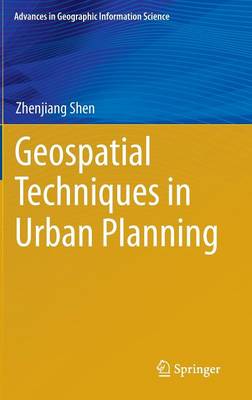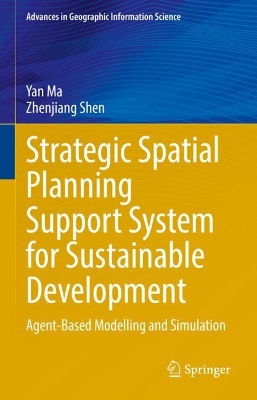Advances in Geographic Information Science
2 total works
This work presents cases studies of applications of Geotechnology such as Geography Information Systems, virtual reality and cellular automaton and multi-agent systems in the field of urban planning and design.These are joint research presentations with students and colleagues from Kanazawa University. All these case studies are about application in Japanese or Chinese cities, which are on-field examples reflecting the enormous spread of geo-computation technology. Nevertheless, the concepts have wide applicability to other contexts. The works can be classified into three types of Geotechnological applications at different levels of urban spaces, which are relevant to different kinds of urban planning and development projects. The book is comprised of three parts: Part 1: Geosimulation and land use plan Part 2: Geo Visualization and urban design Part 3: Geography information system and planning support
Strategic Spatial Planning Support System for Sustainable Development
by Yan Ma and Zhenjiang Shen
Published 29 September 2022
This book introduces a planning support system called Strategic Spatial Plan Support System (SSP-SS) to visualize population growth and predict energy demand, land use, and waste discharge resulting from urbanization. By analyzing policy interactions between household agents, the book uses SSP-SS to visualize policy effects on urban areas during stages of growth and decline. Simulations are created based on these policy outcome assessments, taking into account the influences of energy and resource consumption on sustainable development in urban environments. The book is geared towards researchers, universities, and urban policy makers.
The book begins by presenting a framework of urban growth simulation, and introducing SSP-SS. Then, household lifecycle and relocation models are employed for simulating policy impacts on urbanization, and investigating the impacts of spatial strategic planning. Several projects are assessed using agent-based modeling including shopping centre construction, day-care service for aging populations, and shelter accommodation capacities for earthquakes and other disasters. The final chapters discuss water and energy management, the environmental impacts of demand and consumption, and future recommendations for sustainable development and policy implementation.
Introduces Strategic Spatial Plan Support System (SSP-SS) to visualize population growth and predict energy demand, land use, and waste discharge resulting from urbanization.
Analyzes policy effects on urban areas during stages of growth and decline.
Discusses the influences of water and gas consumption on environmental issues in urban areas for sustainable development.
The book begins by presenting a framework of urban growth simulation, and introducing SSP-SS. Then, household lifecycle and relocation models are employed for simulating policy impacts on urbanization, and investigating the impacts of spatial strategic planning. Several projects are assessed using agent-based modeling including shopping centre construction, day-care service for aging populations, and shelter accommodation capacities for earthquakes and other disasters. The final chapters discuss water and energy management, the environmental impacts of demand and consumption, and future recommendations for sustainable development and policy implementation.
Introduces Strategic Spatial Plan Support System (SSP-SS) to visualize population growth and predict energy demand, land use, and waste discharge resulting from urbanization.
Analyzes policy effects on urban areas during stages of growth and decline.
Discusses the influences of water and gas consumption on environmental issues in urban areas for sustainable development.

